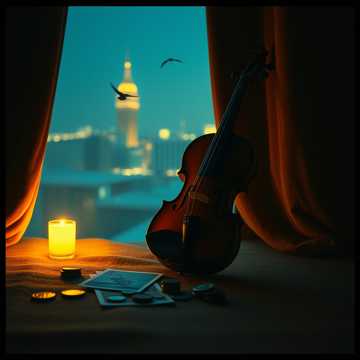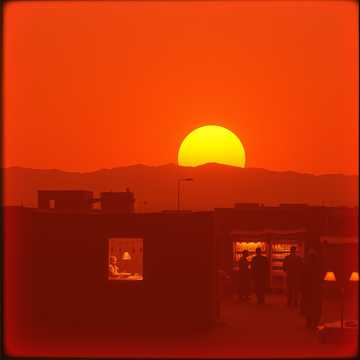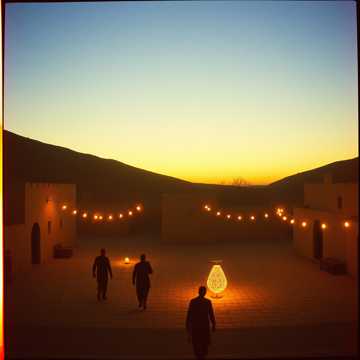
Free 6/8 tempo Music Generator Powered by AI
Turn text into high-quality 6/8 tempo music effortlessly – no login required!
music.toolTips

يا رخص قلبي عندك
A melancholic ballad exploring the emotional cost of love overshadowed by material desires. The song features heartfelt lyrics set against a backdrop of traditional Syrian tarab instrumentation, with a deep, intimate mood accentuated by slow, aching melodies.
03:11
1 days ago

bant sousse
Tghanni 3la Bent Sousse b’rouh Amazigh, zzinha, tab3ha lzwin, w’jou fi jaw festif dyal l’Atlas.
04:34
6 days ago

bant sousse
A vibrant and festive Amazigh song that evokes the warmth of village gatherings in the Atlas mountains. Featuring traditional instruments like the rbaba and bendir, it creates a joyful and expressive atmosphere, sung in Tamazight with a deep masculine voice.
03:56
6 days ago
Introduction to 6/8 Tempo: Definition and Historical Background
The 6/8 Tempo is a musical time signature that organizes a measure into six eighth notes, typically grouped in two sets of three. This creates a lilting, flowing rhythm often described as 'compound duple meter.' The 6/8 Tempo has been a cornerstone of musical expression for centuries, appearing in classical compositions, folk traditions, and modern popular music. Historically, the 6/8 Tempo originated in European dance music of the Baroque and Classical eras, where it was frequently used for minuets, gigues, and marches. Over time, it evolved into a versatile rhythmic structure found in various genres—from symphonic works and romantic ballads to pop, rock, and cinematic scores—thanks to its distinctive swinging or triplet-based feel that evokes both movement and emotion.
Sub-tags and Classifications of 6/8 Tempo
Slow 6/8 Tempo (Ballad Style)
The slow 6/8 Tempo, often ranging between 50–70 BPM, is frequently used in romantic ballads and emotional compositions. Its gentle triplet pulse allows for expressive phrasing and melodic flexibility, making6/8 Tempo content generation it a popular choice in love songs, film scores, and slow rock pieces. The rolling rhythm of this sub-tag creates a soothing and contemplative atmosphere.
Moderate 6/8 Tempo (Folk and Traditional Style)
Moderate 6/8 Tempo pieces, typically between 80–110 BPM, are common in folk, traditional, and Celtic music. This tempo provides a lively yet steady motion, ideal for dances like the jig. It captures the natural swing of human movement, balancing rhythmic clarity with expressive nuance.
Fast 6/8 Tempo (March and Rock Style)
Fast 6/8 Tempo music, ranging from 120–160 BPM, conveys energy and momentum. It is often used in military marches, rock anthems, and energetic orchestral passages. The driving triplet rhythm provides forward propulsion and rhythmic excitement, making it suitable for high-intensity scenes and performances.
Compound 6/8 Tempo (Polyrhythmic and Experimental Forms)
In modern and experimental genres, composers sometimes use 6/8 Tempo to create complex rhythmic textures, blending it with other meters like 3/4 or 12/8. This sub-tag highlights the adaptability of 6/8 Tempo in progressive rock, jazz fusion, and cinematic sound design, where shifting rhythms generate emotional tension and creative dynamism.
Famous Artists and Works in 6/8 Tempo
Ludwig van Beethoven
Beethoven utilized the 6/8 Tempo in several of his symphonies and sonatas to evoke a sense of grandeur and movement. A notable example is the 'Pastoral Symphony' (Symphony No. 6), where the flowing 6/8 rhythm beautifully mimics the motion of nature and pastoral serenity.
Beethoven – Symphony No. 6 ('Pastoral Symphony')
Beethoven’s Sixth Symphony uses 6/8 Tempo in several movements to depict scenes of nature and rustic life. The time signature gives the music a flowing, organic quality, illustrating the gentle motion of streams and pastoral tranquility.
Tchaikovsky
Tchaikovsky frequently employed 6/8 Tempo to express emotion and dance-like motion, particularly in ballets such as 'Swan Lake' and 'The Nutcracker.' His use of compound meter added grace and rhythmic vitality to his orchestral writing.
Queen – 'We Are the Champions'
This classic rock anthem showcases how 6/8 Tempo can enhance the grandeur and emotional intensity of a song. The rolling rhythm supports the song’s triumphant build-up, blending classical and rock influences seamlessly.
The Beatles
The Beatles masterfully incorporated 6/8 Tempo into several of their hits, such as 'Norwegian Wood' and 'Oh! Darling.' Their innovative use of 6/8 rhythm brought new life to popular music by blending traditional structure with modern songwriting techniques.
Tchaikovsky – 'Swan Lake'
In 'Swan Lake,' the 6/8 Tempo is used to mirror the elegance of ballet movement. The triplet rhythm complements the dancers’ fluid motions, reinforcing the connection between rhythm and physical expression.
Queen
Queen’s 'We Are the Champions' famously uses 6/8 Tempo to create a powerful, anthemic feel. The rhythmic pulse supports Freddie Mercury’s dynamic vocal delivery, exemplifying how 6/8 can amplify emotional and dramatic impact in rock music.
Adele – 'Someone Like You'
Adele’s hit ballad uses a slow 6/8 Tempo to evoke deep emotion and vulnerability. The rhythmic pattern allows her vocals to flow naturally, creating a heartfelt and intimate listening experience.
Adele
Adele’s ballads like 'Someone Like You' and 'Make You Feel My Love' demonstrate how 6/8 Tempo lends a soulful, swaying rhythm to contemporary pop music. The meter allows for expressive vocal phrasing and deep emotional resonance.
Application Scenarios for 6/8 Tempo Music
6/8 Tempo music is widely used in cinematic soundtracks to convey emotion, motion, and storytelling depth. The flowing rhythm suits scenes involving nature, introspection, or romantic tension, enhancing the narrative with rhythmic elegance.
Film Soundtracks
In commercials, 6/8 Tempo is employed to create memorable and emotionally resonant backgrounds. Its gentle sway can evoke comfort, nostalgia, or inspiration, making it ideal for lifestyle and luxury brand campaigns.
Advertising Music
Game composers use 6/8 Tempo to accompany exploration or emotional story moments. The rhythm’s balance between movement and contemplation makes it suitable for fantasy worlds, character themes, or victory sequences.
Video Game Background Music
In live settings, 6/8 Tempo songs provide dynamic contrast and audience engagement. Musicians leverage the compound rhythm to transition between emotional depth and rhythmic excitement, adding variety to concert repertoires.
Live Performances and Concerts
Dance choreographers often use 6/8 Tempo to structure flowing movements or waltz-like sequences. The compound duple meter allows dancers to express both fluidity and energy, aligning motion with rhythmic accents.
Dance and Choreography